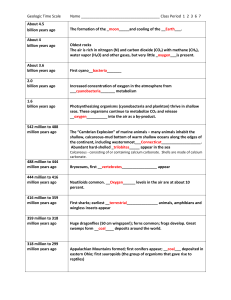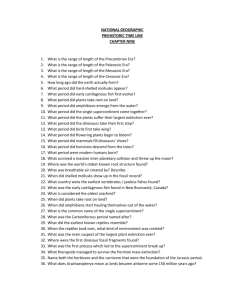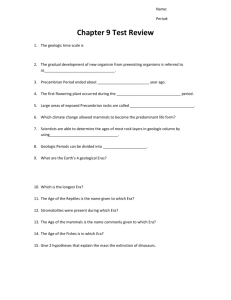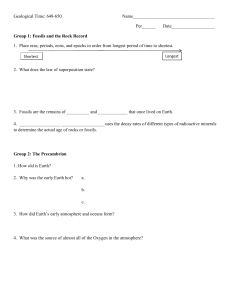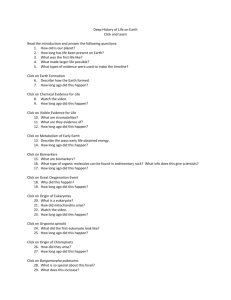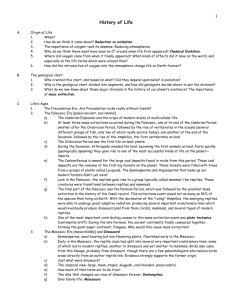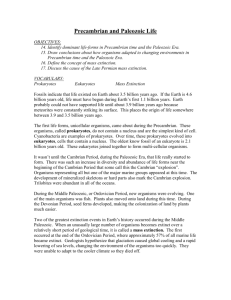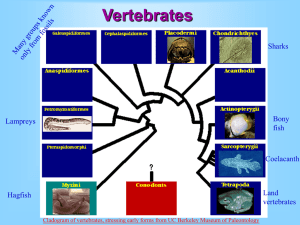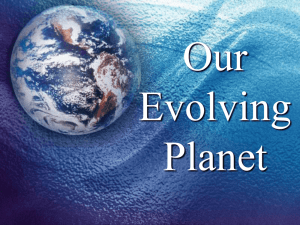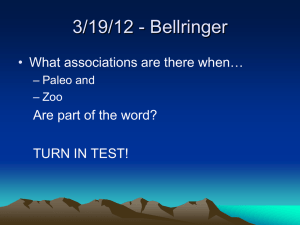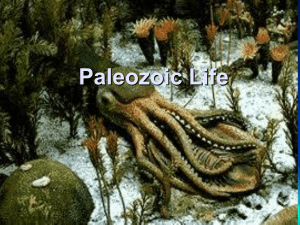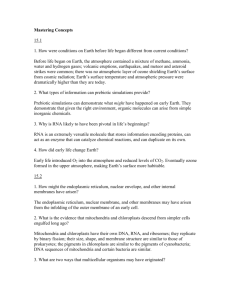Earth Science
advertisement
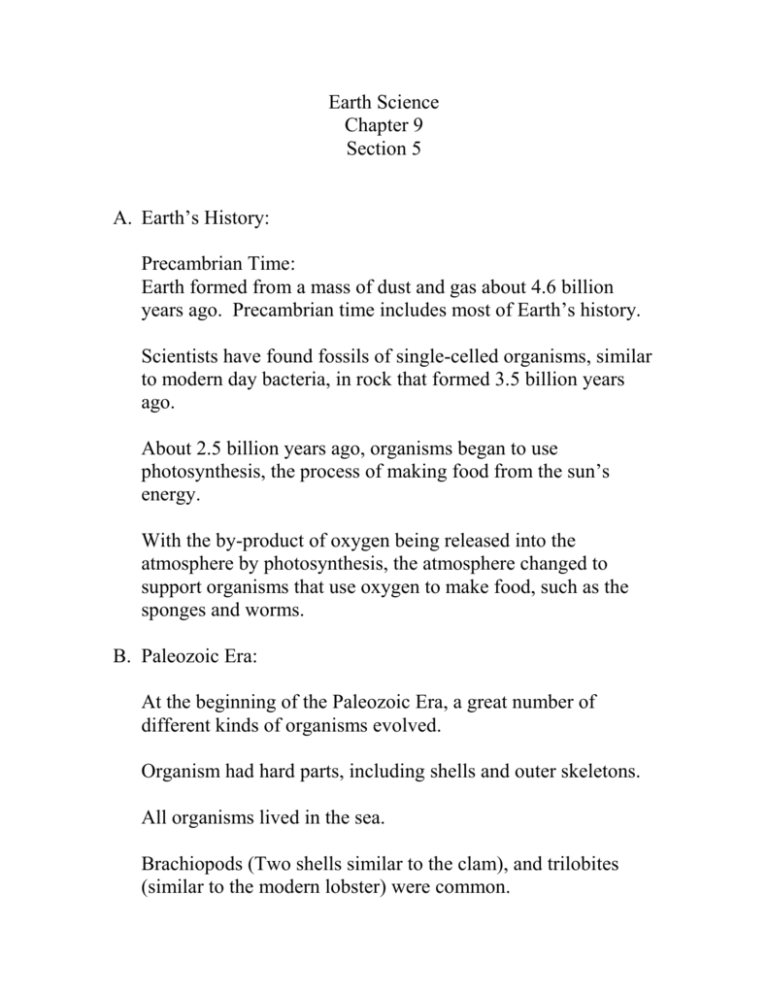
Earth Science Chapter 9 Section 5 A. Earth’s History: Precambrian Time: Earth formed from a mass of dust and gas about 4.6 billion years ago. Precambrian time includes most of Earth’s history. Scientists have found fossils of single-celled organisms, similar to modern day bacteria, in rock that formed 3.5 billion years ago. About 2.5 billion years ago, organisms began to use photosynthesis, the process of making food from the sun’s energy. With the by-product of oxygen being released into the atmosphere by photosynthesis, the atmosphere changed to support organisms that use oxygen to make food, such as the sponges and worms. B. Paleozoic Era: At the beginning of the Paleozoic Era, a great number of different kinds of organisms evolved. Organism had hard parts, including shells and outer skeletons. All organisms lived in the sea. Brachiopods (Two shells similar to the clam), and trilobites (similar to the modern lobster) were common. During the Ordovician and Silurian periods ancestors of the modern octopus and squid appeared as well as the jawless fish. The jawless fish is the first vertebrate to appear. During the late Silurian period, insects appeared and plants began to grow on land. By the Devonian Period plants that could grow in drier areas had evolved. Among these plants were the earliest ferns. The Devonian is often called the “Age of the Fishes”, because every main group of fishes was present in the ocean. During the Devonian Period animals began to invade the land. Amphibians- creatures that live partly on land and partly in water. Reptiles- creatures that evolved from amphibian during the Carboniferous Period. Reptiles have scaly skin and lay eggs . During the Carboniferous Period, winged insects evolved, including the dragonfly and the cockroaches. Giant ferns and cone-bearing plants and trees formed swampy forests called “coal forests”. Mass extinction ends the Paleozoic Era. The mass extinction at the end of the Paleozoic affected both plants and animals, on land and in the sea. Scientists do not know what caused mass extinction, but as much as 95% of the life in the oceans disappeared. The mass extinction did not affect fishes, and many reptile also survived. C. The Supercontinent Pangea: The theory as to what caused the mass extinction of the Paleozoic, occurring during the Permian Period, was the movement of Pangea, and the climatic changes. D. The Mesozoic Era: “Age of the Reptiles” Triassic Period: Age of the reptile begins. First dinosaurs appear. First mammals, which evolve from warm-blooded reptiles, appear. First turtles and crocodiles appear. Conifer, palm-like trees, and ginkgo trees dominate forests. Jurassic Period: Pangea continues to break apart. Sea level rises Largest dinosaurs thrive such as stegosaurus and Diplodocus. First birds appear. First flying reptiles appear. Cretaceous Period: Continents move toward their present day position. Widespread volcanic activity occurs. Dinosaurs dominate, such as Tyrannosaurus Rex. First snakes appear. Mass extinction at end causes disappearance of many land and marine life forms, including dinosaurs. Flowering plants evolved producing seeds inside fruits. Another Mass Extinction: Scientists hypothesize, about 65 million years ago an object form space struck Earth, causing the mass extinction. Others hypothesize that increased volcanic activity and climatic changes were responsible. E. The Cenozoic Era: Tertiary Period: Mountains form: Rocky Mts., Alps, Andes, and Himalayas. Continents move into present day positions. Flowering plants thrive. First grasses appear. Age of mammals begins. Modern groups such as, horses, elephants, bears, rodents, and primates appear. Mammals return to the seas in the form of whales and dolphins. Ancestors of humans evolve. Continental glaciers cover North America several times beginning 2.5 million years ago. Quaternary Period: Thick glaciers advanced and retreated over much of North America and Europe, South America, and Asia, and all of Antarctica. The Great Lakes form. Giant mammals flourish in parts of N. America and Eurasia. They become extinct when the ice age ends about 10,000 years ago. Mammals, flowering plants, and insects dominate land. Modern humans evolve in Africa about 100,000 years ago.
